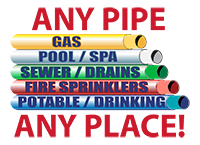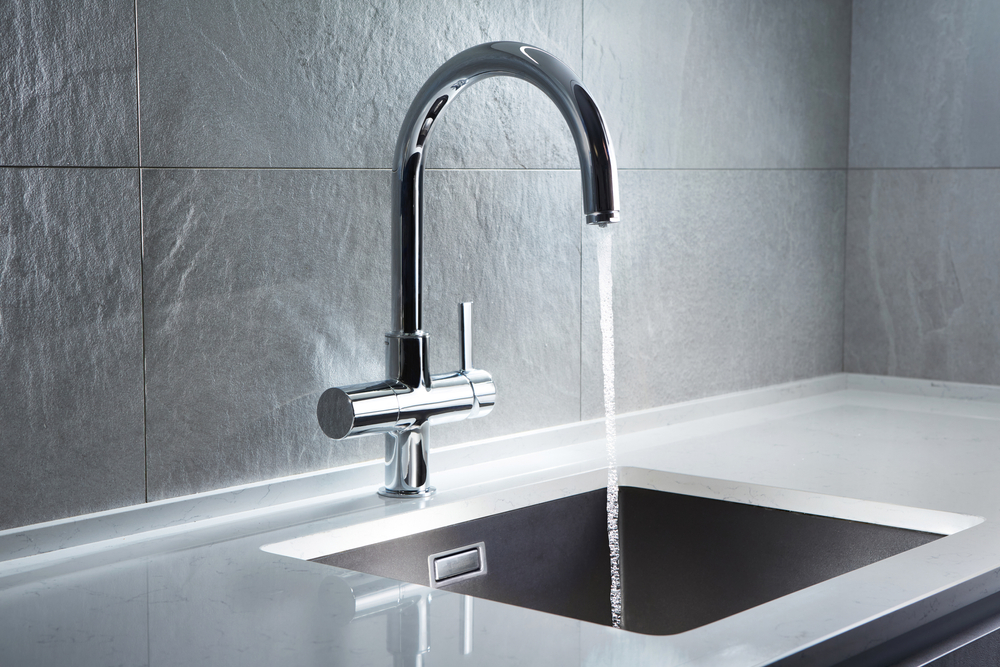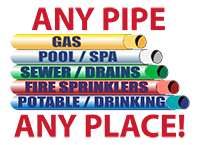Maintaining a healthy and functional plumbing system is essential for any home or business in San Diego, California. While pipes and fixtures may seem straightforward, they are crucial in delivering clean water and efficiently removing waste.
The air gap is one key component that safeguards your plumbing system’s safety and efficiency. In simpler terms, an air gap is a physical separation between the discharge point of a fixture (like a dishwasher) and the rim of the receiving unit (like a sink or drain). This separation acts as a critical barrier, preventing the potential contamination of your clean water supply.
Understanding the Basics of Plumbing Systems
Imagine your life without running water. There are no refreshing showers, convenient dishwashing, or readily available water for drinking, cooking, or cleaning. This inconvenient scenario highlights the critical role plumbing plays in our daily lives, both in homes and businesses.
A well-functioning plumbing system is essential for:
- Delivering clean water: Pipes and fixtures transport clean water throughout a building for various purposes, including drinking, washing, and sanitation.
- Efficiently removing waste: The plumbing system removes wastewater from sinks, toilets, and other fixtures, preventing unhygienic conditions and potential health hazards.
Defining an Air Gap in Plumbing
Now, let’s delve deeper into a specific component that safeguards your plumbing system’s safety and efficiency: the air gap.
An air gap, in simpler terms, is a physical separation between the discharge point of a fixture, like a dishwasher, and the rim of the receiving unit, like a sink or drain. Imagine a small air pocket created between the two points. This separation acts as a critical barrier, preventing the potential contamination of your clean water supply.
Here’s an illustration:
- Without an air gap: If contaminated water backs up in the drain, it could siphon back into the clean water line through the dishwasher hose, posing a health risk.
- With an air gap: The air gap creates a non-siphonable barrier. Even if the receiving unit overflows or backs up, the air gap prevents contaminated water from re-entering the clean water line, safeguarding your water supply.
Where Air Gaps are Typically Installed
Air gaps, those crucial safety features in plumbing systems, are typically found in specific areas to prevent backflow and contamination. Here’s a closer look at where you might encounter them in your San Diego home or business:
Kitchen Sinks:
- Dishwashers: This is the most common location for air gaps. They are typically installed on the countertop next to the faucet and connect to the dishwasher’s drain hose. The air gap ensures that even if the sink overflows or the drain backs up, contaminated water cannot siphon back into the clean water supply through the dishwasher hose.
- Other Fixtures: In some cases, air gaps might also be installed for other fixtures connected to the kitchen sink, such as garbage disposals or reverse osmosis systems.
Dishwashers:
- Built-in Air Gaps: Some modern dishwashers have built-in air gaps within the appliance. These internal mechanisms perform the same function as the external air gap devices, creating a physical separation between the dishwasher’s drain line and the flood rim of the sink.
Water Treatment Systems:
- Protecting Treated Water: Air gaps can be installed on water treatment systems like reverse osmosis systems. This ensures that any potential contamination from the source water or the treatment process is prevented from entering your clean, treated drinking water.
By strategically placing air gaps in these critical locations, you can significantly enhance the safety and reliability of your water supply in your San Diego property.
Regulatory Requirements and Plumbing Codes
While air gaps prevent backflow and contamination in your plumbing system, their installation isn’t solely based on best practices. In many areas, including San Diego, specific regulations and plumbing codes mandate their use in certain situations.
The California Plumbing Code (CPC) serves as the primary reference for plumbing standards in San Diego. This code outlines specific requirements for air gaps, dictating their usage in various scenarios. For example, the CPC typically mandates air gaps for:
- Dishwashers: Regardless of whether a dishwasher has a built-in air gap, the code often requires an additional external air gap.
- Fixtures connected to indirect waste lines carry wastewater from fixtures like sinks, washing machines, and floor drains. Air gaps prevent potential backflow contamination from these lines into the clean water supply.
- Water treatment systems: As mentioned earlier, air gaps can protect the treated water from contamination.
San Diego Plumbing & Pipelining is well-versed in the intricacies of the California Plumbing Code and local regulations. Our licensed and insured plumbers can install air gaps according to the highest safety standards and advise you on specific requirements applicable to your plumbing system.
Remember, complying with air gap regulations is not just about adhering to codes; it’s about safeguarding the health and safety of yourself and your loved ones.
Benefits of Air Gaps in Plumbing
Air gaps, those seemingly simple components in your San Diego plumbing system, offer significant benefits:
- Water Safety: They act as crucial barriers, preventing contaminated water from potentially backflowing into your clean water supply and safeguarding your health.
- Reduced Contamination: Air gaps help minimize the risk of contamination from sewer gases, cross-contamination, and debris backflow, enhancing water quality.
- Improved Efficiency: By potentially reducing blockages and promoting smooth operation, air gaps can contribute to a more efficient plumbing system.
Types of Air Gaps in Plumbing Systems
While the core function of preventing backflow remains the same, air gaps come in various forms, each suited for specific applications:
Physical Air Gaps:
- The Simplest and Most Common: These are the classic air gaps you might see next to your kitchen sink. They create a visible physical separation between the discharge point of a fixture (like a dishwasher) and the flood rim of the receiving unit (like a sink).
- Applications: Primarily used for dishwashers and other fixtures connected to kitchen sinks. Their simplicity and ease of maintenance make them popular choices.
Reduced Pressure Principle Backflow Preventers (RPs):
- More Complex but Compact: These air gaps utilize a small check valve and an air gap to prevent backflow. The check valve closes when water pressure increases due to backflow, preventing contaminated water from entering the clean water supply.
- Applications: Often used in commercial settings or situations where space is limited, as they offer a compact alternative to physical air gaps while maintaining backflow prevention.
Atmospheric Vacuum Breakers (AVBs):
- Unique Mechanism: These air gaps employ a float and spring mechanism. Under normal water flow, the float rises, allowing water to pass through. However, the water pressure drops when backflow occurs, causing the float to sink and activate a spring-loaded valve, creating an air gap and preventing contamination.
- Applications: Primarily used in outdoor applications or below-grade installations where freezing temperatures could damage physical air gaps.
Choosing the Right Air Gap:
The most suitable air gap type for your specific needs depends on various factors, including:
- Application: Where will the air gap be installed (e.g., kitchen sink, outdoor hose bib)?
- Space constraints: Do you have sufficient space for a physical air gap, or is a compact option like an RP necessary?
- Local regulations: Specific regulations in your area might mandate specific air gap types for certain applications.
Consulting a qualified plumber can help you determine the appropriate air gap type for your needs and ensure it complies with local regulations.
Common Issues and Maintenance of Air Gaps
While air gaps are reliable guardians of your water safety, they can encounter occasional issues like any other component. Here’s what you should know:
Potential Air Gap Problems:
- Clogging: Food particles or debris can accumulate in the air gap, hindering proper drainage and potentially creating a breeding ground for bacteria.
- Leaks: Worn-out seals or loose connections might cause leaks around the air gap, wasting water and compromising effectiveness.
- Damage: Physical damage from accidental bumps or improper handling can compromise the air gap’s functionality.
Regular Maintenance Tips:
- Cleaning: Regularly inspect the air gap for debris and clean it according to the manufacturer’s instructions. This often involves removing the cap and rinsing it with clean water.
- Visual Inspection: Periodically check for leaks around the air gap and ensure secure connections.
- Professional Assistance: If you suspect any significant issues, leaks, or damage, seek the help of a qualified plumber for proper evaluation and potential repairs.
San Diego Plumbing & Pipelining’s Expertise in Air Gap Solutions
At San Diego Plumbing & Pipelining, we understand the critical role of air gaps in maintaining a safe and healthy water supply. With extensive experience in all aspects of plumbing and pipelining, our licensed and insured plumbers possess the expertise to handle all your air gap needs:
- Air Gap Installation: We can expertly install various air gaps, including physical air gaps, RPs, and AVBs, based on your specific requirements and local regulations.
- Air Gap Maintenance: Our comprehensive maintenance services ensure your air gaps function optimally through regular cleaning, inspection, and promptly addressing minor issues.
- Air Gap Repair: If your air gap encounters any problems, our skilled plumbers can efficiently diagnose and repair it, restoring its functionality and water safety protection.
Some examples of our work that showcase our expertise in air gap solutions:
- The Villas of San Luis Rey Condominiums HOA: During a significant project involving cleaning and restoring hot and cold water pipes, our team ensured all fixtures, including dishwashers, were equipped with properly installed and functioning air gaps, adhering to regulations and safeguarding the community’s water supply.
- Numerous Kitchen Renovations: We have extensive experience collaborating with homeowners and contractors during kitchen renovations. This often involves installing new air gaps alongside other plumbing fixtures, ensuring the updated kitchens comply with local codes, and prioritizing water safety.
For Help with Installing an Air Gap in your Home, Contact the San Diego Plumbing & Pipelining Experts Today
While air gaps are crucial for safeguarding your water supply, it’s important to remember that a healthy plumbing system relies on various components working together. Maintaining a clear main sewer line is essential to prevent backups, clogs, and potential health hazards.
If you experience any plumbing issues, including malfunctioning air gaps, leaks, or clogs, don’t hesitate to seek professional assistance. Attempting DIY repairs can lead to further complications and potential safety risks.
San Diego Plumbing & Pipelining’s experienced and licensed plumbers are here to help. We offer a comprehensive range of services.
Let our expertise and commitment to customer service give you peace of mind, knowing your water supply is safe and your plumbing system is functioning optimally. Contact us for a free consultation and experience the difference professional plumbing services can make!







